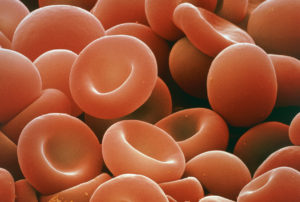Base editing proteins to repair mutations in the haemoglobin gene

Beta thalassaemias are a group of inherited blood disorders caused by mutations in the human beta globin gene (HBB). Certain combinations of mutations in HBB can lead to severe thalassaemia disorders and sickle cell disease which have life threatening consequences.
Researchers at the University of Oxford have developed the use of programmable base editing proteins for gene therapy to cure these disorders. This approach offers a safer and more effective route of treatment compared to bone marrow transplantation and other gene therapies currently in development. The invention would allow the patient’s own cells to be harvested, repaired ex vivo with the programmable base editor and then infused as part of an autologous bone marrow transplant.
Beta thalassaemia
Beta thalassaemias are a group of inherited blood disorders caused by mutations in the human beta globin gene (HBB). This gene encodes one of the two chains of the haemoglobin molecule responsible for oxygen carriage by red blood cells.
Haemoglobin E (HbE) has a high prevalence in Asia because it confers protection against malaria. However, when this variant is inherited with a second beta thalassaemia mutation, severe thalassaemia can develop. This combination causes approximately 50% of all severe thalassaemia worldwide. This translates to ~20,000 births annually, who require lifelong blood transfusions every 2-3 weeks to survive.
Haemoglobin S (HbS) can result in sickle cell disease. This severe form of congenital anaemia results in life threatening complications. The median life expectancy with sickle cell disease is ~60 years in the UK at present but many patients die in their 40s from multiple complications.
Current treatment available
It is possible to cure sickle cell disease and severe thalassaemia in childhood with allogeneic bone marrow transplantation, but this carries a mortality rate of 1-5% and requires fully matched sibling transplant. Over the age of 18, allogeneic transplant would have an unacceptably high mortality.
Due to the risks of allogeneic transplantation it is only performed on a small percentage of patients with these conditions.
Oxford technology
The invention developed by researchers at the University of Oxford uses a programmable base editor to cure HbE and HbS beta thalassaemia.
The use of a programmable base editor is a safer and more effective approach to gene therapy than the addition of the HBB gene that could integrate into the genome at thousands of different sites.
The invention would allow the patient’s own cells to be harvested, repaired ex vivo with the programmable base editor and then infused as part of an autologous bone marrow transplant. Autologous bone marrow transplants are much safer than an allogeneic transplant. It is likely the mortality would be <1% with such a procedure, even in adults with the disease.
This technology is subject to patent application WO2020/065303.
about this technology

